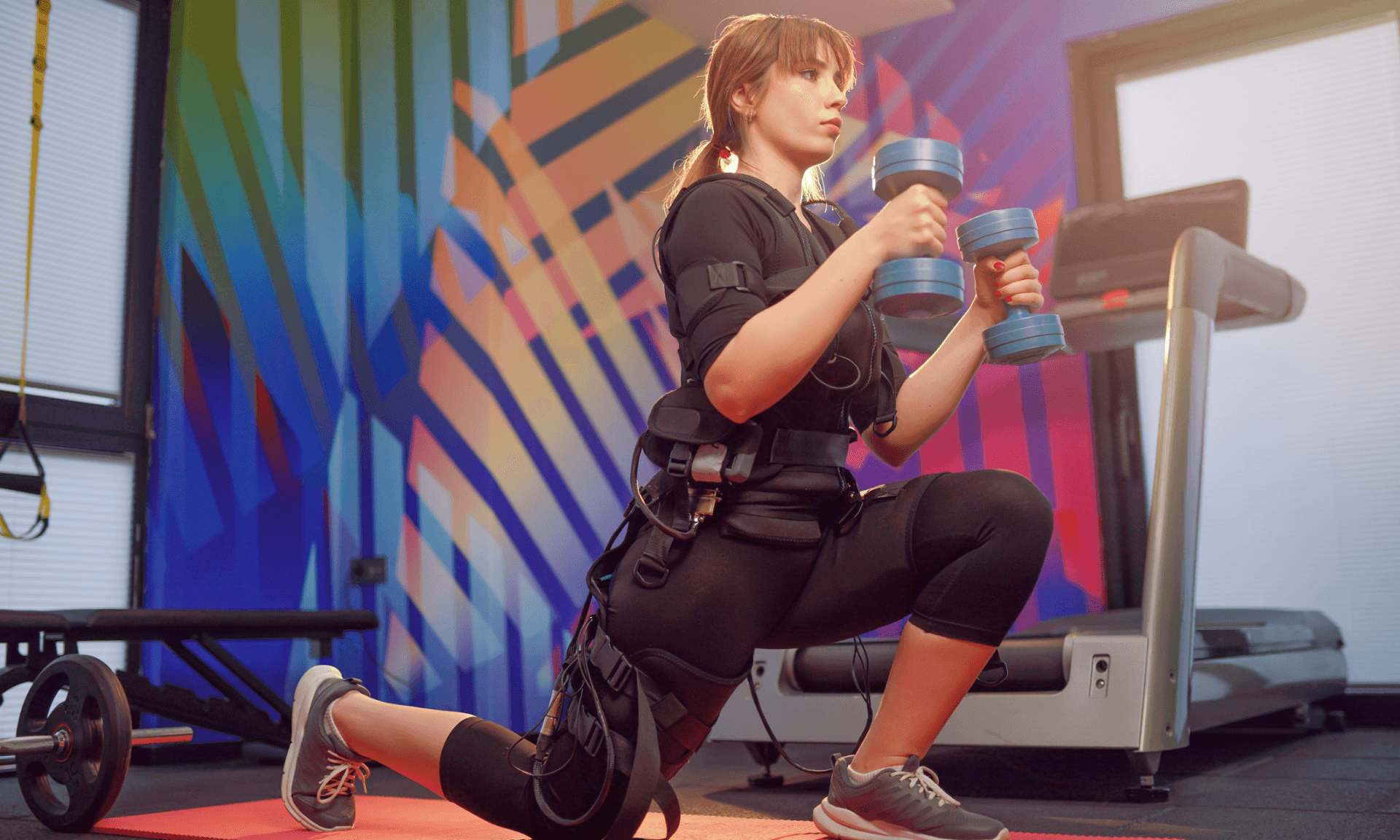Stimulators that use pulses of electricity to stimulate your muscles and allegedly give you rock-hard abs from the comfort of your couch were a staple of the infomercial era. Now, similar technology — electrical muscle stimulation aka EMS — is showing up in fitness classes and gadgets.
Some say EMS is a more effective way to build strength in less time — many of those classes and products that utilize EMS claim the 20-minute session equals 90 minutes of a regular on-your-own workout. But is this just more Y2K hype? Or are the results really that good?
What is electrical muscle stimulation (EMS)?
When you pick up a weight, your brain sends electrical signals to your arm to activate the necessary muscles. EMS replicates that process by using an electrical impulse to trigger your muscles to contract and expand — which is how you build strength.
The technology has long been used by physical therapists to prevent muscle weakness due to injury or illness. But now, fitness instructors are taking EMS to the next level with full-body suits. Instead of getting ripped from the couch, people are working out while wearing them to potentially maximize the benefits, says Max Graeber, the head trainer at Katalyst. “It seems to have emerged over the years from a rehab tool … to now trying to take the place of strength training,” says Krista Austin, PhD, MS, a sports scientist and performance specialist who works with Olympic athletes.
The suit generally looks like a wetsuit…with wires. You’ll probably need to wear a base layer — similar to a leotard — to create a barrier between you and the electrodes. Some suits are battery-operated, and others may be connected to a machine. When you’re suited up, Graeber says your muscles can feel like they’re “tingling” and “buzzing” — or like they’re working out “against a lot of rubber bands.” And to no one’s surprise, it’s not cheap. Katalyst charges $2,499 for an at-home EMS suit, and one fitness center charges $130 for a single EMS full-body session.
Does having your muscles zapped by an electrical suit sound risky? You may take some comfort in knowing that EMS devices are regulated by the FDA, and manufacturers must show that the tech is safe and works for muscle toning before they can sell it. Still, the FDA says some of these devices may cause “burns, bruising, skin irritation, and pain,” and they generally shouldn’t be used if you’re pregnant or have a pacemaker, adds Graeber. Plus, Austin says we don't know if there are long-term consequences of using EMS regularly.
The pros and cons of EMS
Some studies say it provides a more efficient workout, and Graeber says you can fire up more muscle fibers throughout your body with EMS. “So in conventional training … we're talking about 40—50% of the muscle fibers in one muscle getting recruited,” he says. But EMS can stimulate up to 90%, he adds.
And the suit can help you stimulate muscles that could be ignored during your go-to gym routine. “In a full-body EMS training, you normally target all of the major muscle groups … all at once,” Graeber says. So, yeah, you’ll probably be very sore the next day.
The downside is that it can be easier to go overboard and overwork the muscles. Some studies have even linked EMS to serious conditions like rhabdomyolysis. For the safest experience, Graeber says you’ll need a recovery period of between workouts, about 48 to 72 hours between workouts.
OK, but does EMS actually work?
Well, actually, it can, but don’t expect magical results: “An EMS device may be able to temporarily strengthen, tone, or firm a muscle,” according to the FDA.
“I think there's a strong role for [EMS],” but it’s not enough on its own, says Austin.
theSkimm
No device can just give you abs. But if you are willing to spend some serious cash to level up your gym game and tone your muscles, EMS could be worth a try.
This content is for informational and educational purposes only. It does not constitute a medical opinion, medical advice, or diagnosis or treatment of any particular condition.
Subscribe to Skimm Well
Sign up here to receive our wellness newsletter (currently in beta), filled with actionable advice, expert-vetted content, product recs, and more — delivered directly to your inbox.
